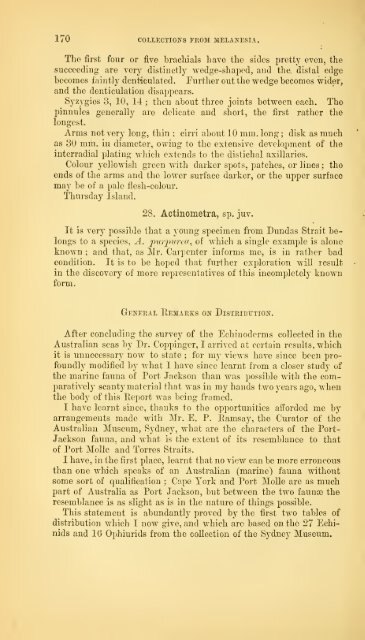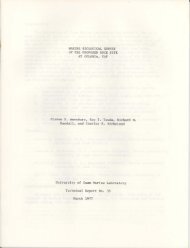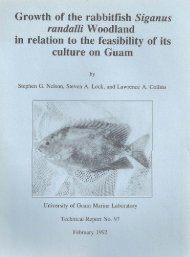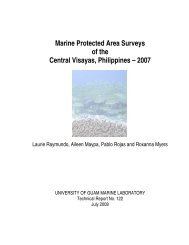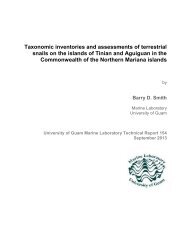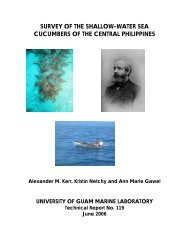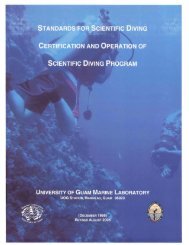Create successful ePaper yourself
Turn your PDF publications into a flip-book with our unique Google optimized e-Paper software.
170 COLLECTIONS FROM MELANESIA.<br />
The first four or five bracliials have the sides pretty even, the<br />
succeeding are very distinctly wedge-shaped, and the. distal edge<br />
becomes faintly denticulated. Further out the wedge becomes wider,<br />
and the denticulation disappears.<br />
Syzygies 3, 10, 14 ; then about three joints between each. The<br />
pinnules<br />
longest.<br />
generally are delicate and short, the first rather the<br />
Arms not very long, thin ; cirri about 10 mm. long; disk as much<br />
as 30 mm. in diameter, Ovving to the extensive development of the<br />
interradial plating which extends to the distichal axillaries.<br />
Colour yellowish green with darker spots, patches, or lines ; the<br />
ends of the arms and the lower surface darker, or the upper surface<br />
may be of a pale flesh-colour.<br />
Thursday Island.<br />
28. Actinometra, sp. juv.<br />
It is very possible that a young specimen from Dundas Strait belongs<br />
to a species, A. piirjmrea, of which a single example is alone<br />
known ; and that, as llr. Carpenter informs me, is in rather bad<br />
condition. It is to be hoped that further exploration will result<br />
in the discovery of more representatives of this incompletely known<br />
form.<br />
General Remarks on Distribtttion.<br />
After concluding the survey of the Echinoderms collected in the<br />
Australian seas by Dr. Coppinger, I arrived at certain results, which<br />
it is unnecessary now to state ; for mj views have since been profoundly<br />
modified by what I have since learnt from a closer study of<br />
the marine fauna of Port Jackson than was possible with the comparatively<br />
scanty material that was in mjr hands two years ago, when<br />
the body of this Report was being framed.<br />
I have learnt since, thanks to the opportunities afforded me by<br />
arrangements made with Mr. E. P. Eamsay, the Curator of the<br />
Australian Museum, Sydney, what are the characters of the Port-<br />
Jackson fauna, and what is the extent of its resemblance to that<br />
of Port Molle and Torres Straits.<br />
I have, in the first place, learnt that no view can be more erroneous<br />
than one which speaks of an Australian (marine) fauna without<br />
some sort of qualification ; Cape York and Port MoDe are as much<br />
part of Australia as Port Jackson, but between the two faunae the<br />
resemblance is as slight as is in the nature of things possible.<br />
This statement is abundantly proved by the first two tables of<br />
distribution which I now give, and which are based on the 27 Echinids<br />
and 16 Ophiurids from the collection of the Sydney Museum.


